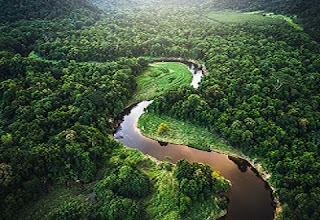Top 5 Dangerous Mountain
1. Annapurna I, Nepal
Annapurna stands at an impressive 8,091 meters (or 26,545 feet) in elevation and ranks as the most dangerous mountain to conquer, having a success rate of only 32%, making its fatality rate stand at about 32 deaths out of every 100 successful climbers.
Annapurna is considered by many the top of the list of the most dangerous mountains to climb in the world. As of now, the mountain has about a 30% fatality rate, which means for every three climbers who reach the top and successfully descend, one person dies trying.
Those harrowing odds only attract the most experienced and bravest climbers to take on the challenge.
The mountain sits in the Himalayas of Nepal. You may be surprised to know that despite its high death rate, it’s only the tenth-highest mountain; however, it still stands at a towering 8,091 meters (26,545 feet). The mountain’s steep faces are the cause of life-taking avalanches that can go off at any minute of the climb. Similar to Kangchenjunga, Annapurna’s remote location makes rescue missions highly unlikely, but they have happened .
2. K2, Pakistan-China
K2 is a monster and it’s widely considered the world’s toughest and most dangerous mountain to climb. Located on the border of Pakistan and China, it’s the second highest in the world, standing at a whopping 8,611 meters (28,251 feet)–just around 250 meters shorter than Mount Everest.
Although it might not be the tallest mountain, K2 presents a highly difficult and steep topography that requires every move to be perfect.
The topography also makes the mountain a hotspot for falling rocks and destructive avalanches. In 2008, witnesses believed an ice avalanche caused complications and was responsible for killing eleven mountaineers. The tragedy is known as the 2008 K2 Disaster and is a reminder of the risks associated with attempting to climb K2.
Due to K2’s northern location, troublesome weather rolls in year-round, bringing frigid temperatures, heavy snowfall, and powerful winds. If climbers miscalculate weather conditions or get caught in an unexpected storm, their lives will be in extreme danger.
3. Kangchenjunga, India-Nepal
Over in the Himalayas, along the border of India and Nepal, Kangchenjunga’s frequent avalanches and high death rates (believed to be around 22%) have made it one of the most dangerous mountains to climb in the world. Kangchenjunga is 8,586 meters (28,169 feet) high–the third highest–and is notorious for killing climbers due to oxygen depletion (hypoxia), exposure, falling rocks, and avalanches.
Kangchenjunga has no easy route to reach the summit. Each climber has to methodically come up with a strategy and make tough life-or-death decisions when unfavorable weather blows in. If you are not with a commercial team who is able to properly fix ropes, there may be sections without ropes, meaning one mistake would be fatal.
The remoteness of Kangchenjunga also makes the journey to and from the mountain extremely difficult. If someone experiences an injury on the mountain and manages to get down, they will still have a dangerous, multi-day trek back to safety.
4. Mount Everest, China-Nepal
Perhaps the most notorious mountain of them all, Mount Everest stands 8,849 meters (29,032 feet) high on the Nepal-China border. Everest, the tallest mountain above sea level, is a behemoth that entices climbers from all over the world with its majesty. Sadly, over 300 people have perished while attempting to conquer the mountain.
While some deaths have somewhat foreseeable (albeit unpredictable) causes, avalanches and winter storms only account for about 59% of the deaths on the mountain. The other 41% are a bit less straightforward. Once reaching 8,000 meters, you’re entering Everest’s so-called “Death Zone.” Ninety-four people have died in this zone from much more ambiguous causes; perhaps altitude sickness, frostbite, or hypothermia overtook them. Most of the bodies of the deceased are left on the mountain, so only Everest will know the true cause.
5.Dhaulagiri I, Nepal
The translation of Dhaulagiri means Dazzling Mountain, but don’t let its name fool you. Despite the mountain’s undeniable beauty, it’s known for being a physically and mentally demanding climb that only expert climbers should consider.
Dhaulagiri is another one of Nepal’s famous peaks that’s a part of the Himalayas. At 8,167 meters (26,795 feet), climbers have to deal with a plunge in oxygen levels; however, many traditionalists choose not to bring oxygen tanks along with them. Since the first successful summit in 1960, the total death count averages out to about one per year. Although that may not sound like a shocking amount, there
have been less than 500 successful summits.



.jpg)


.jpeg)
Comments
Post a Comment